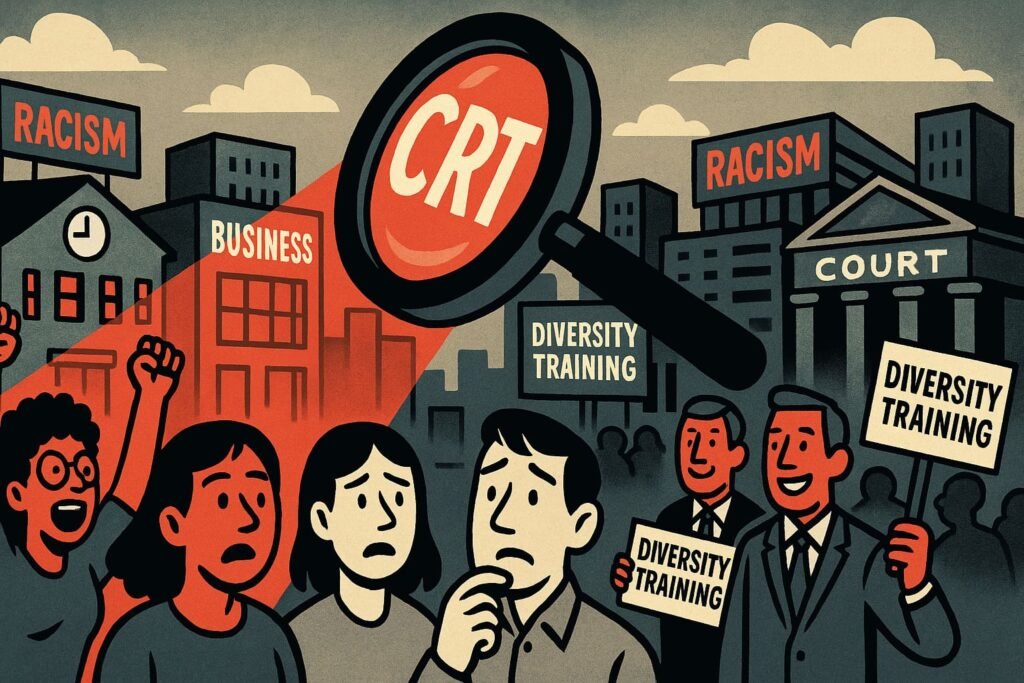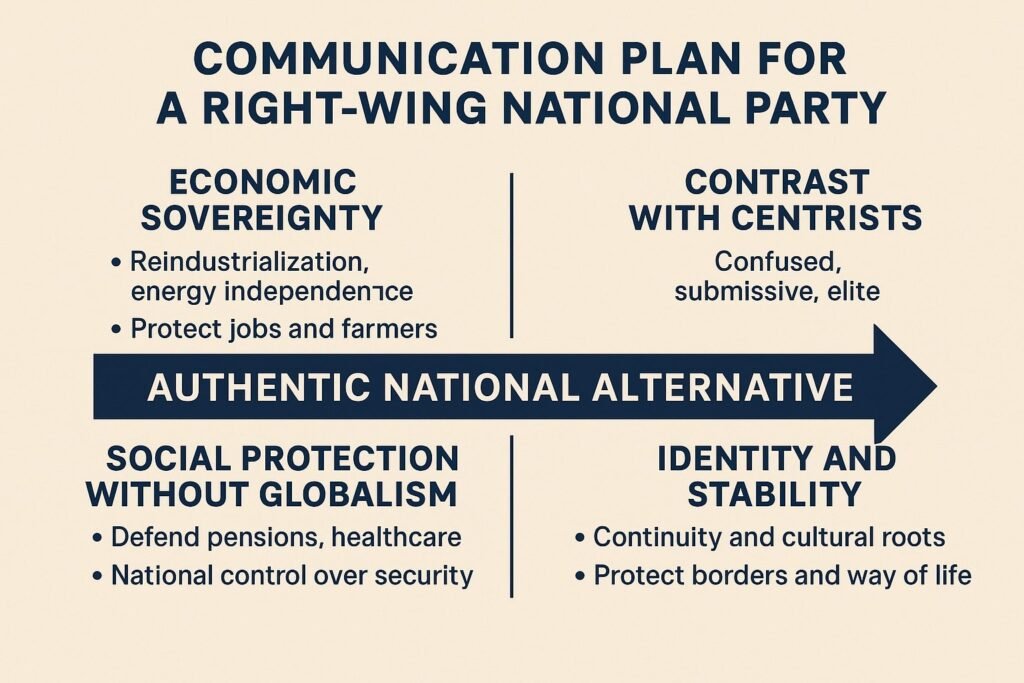Critical Race Theory – When Racism Becomes the System
From Civil Rights to Permanent Guilt
Racism once meant judging someone by the colour of their skin. In the 1960s civil rights movement, the goal was to end that and make race less important in public life. Enter Critical Race Theory (CRT).
Born in universities in the late 1970s, CRT flipped the script. It argued racism isn’t about individuals at all, but about systems. Laws, schools, workplaces, even “neutral” rules are said to be designed to keep white people on top.
The promise was justice. The result? A worldview where racism is everywhere, permanent, and impossible to escape.
Table of contents
What Is Critical Race Theory?
In simple terms, CRT argues:
- Racism is not an exception; it’s the rule.
- If outcomes differ between racial groups, the system is racist.
- Even if you don’t act with prejudice, you still benefit from “white privilege.”
In this logic, the absence of proof is not proof of absence — it’s just more evidence of hidden bias.
Buzzwords of CRT
CRT comes wrapped in a new moral dictionary:
- “Systemic racism” – Racism baked into institutions, not just people.
- “White privilege” – Invisible advantages held by white people.
- “Anti-racism” – Not enough to avoid racism; you must actively dismantle the system.
- “Equity” – Equal rules don’t matter, only equal outcomes do.
- “Lived experience” – Personal testimony outranks data or debate.
These buzzwords make CRT less a theory and more a moral framework — one you can’t argue with without proving the theory correct.
How CRT Shows Up in Practice
- In Education: Curricula teaching children that racism shapes every institution.
- In Workplaces: Diversity training where staff “acknowledge privilege” and confess unconscious bias.
- In Politics: Laws and quotas designed around group outcomes, not individual rights.
- In Media: Headlines framing almost every disparity as proof of systemic racism.
What started in law schools now runs through classrooms, HR departments, and policymaking.
Why Institutions Promote CRT
- Academics build careers explaining invisible racism in everything.
- Activists gain power by framing all politics through identity.
- Corporations buy moral cover with cheap training sessions instead of real reform.
- Politicians gain easy credit by adopting CRT buzzwords instead of solving economic inequality.
CRT doesn’t just describe racism — it creates a permanent role for those managing the system.
The Consequences of CRT Thinking
- Division: People reduced to racial categories, not individuals.
- Permanent guilt: Some groups always cast as oppressors, others as victims.
- Silenced debate: Disagreeing with CRT is labelled racism itself.
- Distraction: Class and economic issues ignored while identity dominates politics.
The irony? A theory meant to reduce racism often entrenches it, by making race the first and last thing that matters.
Why It Matters
Critical Race Theory isn’t just an academic idea. It’s the backbone of modern identity politics, reshaping schools, workplaces, laws, and media.
By redefining racism as permanent and systemic, CRT ensures the struggle never ends — and neither do the jobs, training sessions, or campaigns that depend on it.
From Justice to Industry
CRT began as a radical critique of law. Today, it’s a cultural operating system, teaching us to see racism everywhere, all the time.
It replaced the civil rights ideal of judging people as individuals with a permanent guilt economy — where your skin colour dictates your moral status.
What was once a fight for equality has become an industry of grievance.
Next: Gender Theory
For a deeper understanding of Critical Theory, check out our Critical Theory Explainer Hub.
FAQ: Critical Race Theory
What is Critical Race Theory in simple terms?
It’s the idea that racism is systemic, built into institutions and structures, not just personal prejudice.
Why is CRT controversial?
Because it reduces people to racial categories, fuels division, and silences debate.
Where is CRT applied today?
In schools, universities, workplaces, politics, and media narratives.
Who promotes CRT?
Academics, activists, corporations, and politicians who benefit from the narrative.
What’s the danger of CRT?
It entrenches division, creates permanent guilt, and distracts from class and economic issues.



